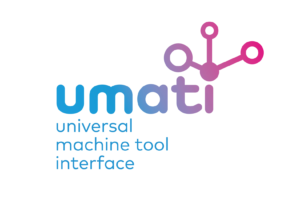umati – on its way to becoming the global language of production

The VDMA and VDW are joining Forces to promote the use and Dissemination of OPC UA Standards throughout the mechanical Engineering sector under the umati label.
“Cross-industry and cross-technology marketing will take our customers a significant step forward,” said Dr. Wilfried Schäfer, Executive Director of the VDW (German Machine Tool Builders’ Association), explaining the strategy at the associations’ joint press conference in Frankfurt am Main.
“Manufacturing companies have not only machine tools but also their own individual mix of machines, equipment, robots and systems. If all these technologies can exist in a common ecosystem which is ideal for producing plug-and-play solutions, this will save end users a lot of time and money,” Schäfer continued. Hartmut Rauen, Deputy Executive Director of the VDMA (German Engineering Federation), added: “Over 30 specialist groupings in more than 17 associations are working on technology-specific interfaces, the “Companion Specifications”. This high level of collaboration forms the basis of true, open interoperability between machines and software systems, from the shop floor to the cloud. Only the VDMA has the means to unite the necessary integrative forces from the wide range of production domains.“
OPC UA Companion Specification for Machinery to be published in 2020
The mechanical and plant engineering sector adopted OPC UA as the standard for data exchange from an early stage. This is because OPC UA provides a uniform framework for machine and system interoperability. Having adopted a bottom-up approach, it became clear how important it was to have uniform definitions for basic elements for a large part of the diverse range of products in mechanical and plant engineering. The simplest example is machine identification, including features such as manufacturer, serial number, year of manufacture and machine type.
Here, various VDMA departments – such as Electrical Drive Engineering, Plastics and Rubber Machinery, Machine Vision, Metallurgy, Robotics and Machine Tools – are currently drawing up the Basic Companion Specification OPC UA for Machinery. “The first version is scheduled for publication later this year,” announced Hartmut Rauen.
umati aimed at end customers
The machine tool industry was also at the forefront of this process. An initiative to develop an open, standardised interface was presented back in 2017. Here, too, an early decision was taken in favour of OPC UA as the base technology. Just two years later, a showcase featuring 70 partners from ten countries demonstrated at EMO Hannover that it was possible to connect 110 machines to 28 software services distributed across the exhibition grounds in a system which functions to all intents and purposes on a “plug and play” basis. In addition, the VDW launched the umati – universal machine tool interface label back in 2018, a brand aimed primarily at customers all over the world.
In the meantime, numerous other OPC UA Companion Specifications have been developed by the VDMA and its partner organisations. In order to give these specifications greater visibility and to increase their usage levels, umati is now being extended to cover the entire mechanical and plant engineering industry as a community for the use and marketing of OPC UA Companion Specifications.
The new name umati – universal machine technology interface represents a performance promise of interoperable production. umati is a brand and label for a community that has come together to propagate the OPC UA standards within the mechanical and plant engineering sector. It provides a framework for joint marketing, public relations, demonstration of use cases and for end customer communication. It is based on the OPC UA interface standardisation in various branches of mechanical and plant engineering. “That is why in the future we will always be referring to the latest version of the OPC UA Companion Specification for Machine Tools“, explains Wilfried Schäfer from the VDW.
The next steps include further optimisation of the relevant Companion Specifications, dissemination of the respective standards, and the staging of showcases at trade fairs. The umati showcases highlight the cross-industry use of various OPC UA standards in a practical way, aimed at demonstrating the suitability of OPC UA standards for everyday use in production to the diverse range of customers.
“We expect to see the first concrete products based on the OPC UA Specification for Machine Tools providing connectivity to customers in the second half of this year,” said Schäfer. “For our partners it is therefore all the more important that the development of the umati community also adheres to this roadmap in providing clear visibility and raising awareness levels,” he continued.
“The VDW and VDMA have decided to take care of this together in future. Production managers all over the world must be able to count on machines from any given manufacturer being able to speak the same language, thus turning the claim of umati – Connecting the World of Machinery, into reality,” concluded Rauen.
Contacts for further information
Andreas Faath, VDMA Forum Industry 4.0, Tel. +49 69 6603–1495, andreas.faath@vdma.org
Dr. Alexander Broos, VDW Research and technology, Tel. +49 69 756081–17, a.broos@vdw.de
Categories: Allgemein